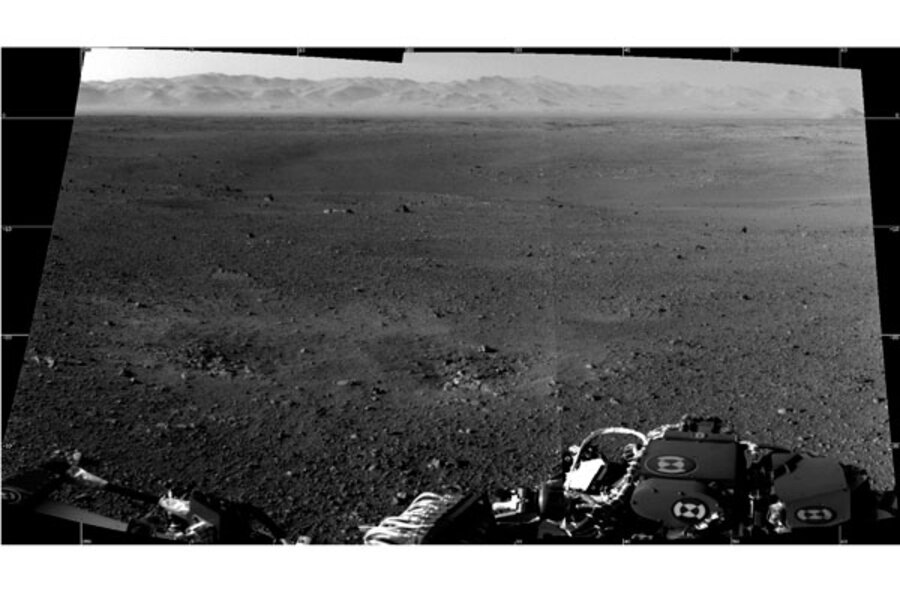Mars rover landing site surprisingly 'Earth-like,' say scientists
Loading...
| Pasadena, Calif.
The ancient Martian crater where the Curiosity rover landed looks strikingly similar to California's Mojave Desert with its looming mountains and hanging haze, scientists said Wednesday.
"The first impression that you get is how Earth-like this seems looking at that landscape," said chief scientist John Grotzinger of the California Institute of Technology.
Overnight, the car-size rover poked its head out for the first time since settling in Gale Crater, peered around and returned a flood of black-and-white pictures that will be stitched into a panorama.
It provided the best view so far of its destination since touching down Sunday night after nailing an intricate choreography. During the last few seconds, a rocket-powered spacecraft hovered as cables lowered Curiosity to the ground.
In the latest photos, Curiosity looked out toward the northern horizon. Nearby were scour marks in the surface blasted by thrusters, which kicked up a swirl of dust. There were concerns that Curiosity got dusty, but scientists said that was not the case.
"We do see a thin coating of dust, but nothing too bad," said Justin Maki, imaging scientist at NASA's Jet Propulsion Laboratory, which manages the mission.
Scientists were giddy about the trenches because it meant Curiosity could drive up to them and start collecting samples once the science phase of the mission gets under way.
Since landing, Curiosity has zipped home a stream of low-resolution pictures taken by tiny cameras under the chassis and a camera at the end of its robotic arm, which remained stowed. It also sent back a low-quality video glimpsing the last 2 1/2 minutes of its descent.
The rover successfully raised its mast packed with high-resolution and navigation cameras. With the mast up, it can begin its shutterbug days in force including taking a 360-degree color view of its surroundings as early as Thursday.
Grotzinger said he was struck by the Martian landscape, which appeared diverse. There seemed to be harder bedrock underneath the gravelly surface, he said.
"It kind of makes you feel at home," he said. "We're looking at a place that feels really comfortable."
Mars, of course, is very different from Earth. It's a frigid desert constantly bombarded by radiation. There are geological signs that it was a warmer and wetter place once upon a time. One of the mission's goals is to figure out how Mars transformed.
After sailing eight months and 352 million miles (566 million kilometers), Curiosity parked its six wheels near the Martianequator where it will spend the next two years poking into rocks and soil in search of the chemical ingredients of life.
The $2.5 billion mission is the most ambitious and expensive yet to Mars.
Its ultimate destination is a mountain towering from the center of the crater floor. Preliminary estimates indicateCuriosity landed four miles (6.5 million kilometers) away from the base of Mount Sharp, thought to contain intriguing signs of past water — a starting point to learning whether microbial life could exist.
Before the one-ton, nuclear-powered Curiosity can start roving, it has to undergo several weeks of tedious but essential health checks.
Since it was too heavy to land using traditional air bags, it used a heat shield, parachute, rockets and cables. An orbiting spacecraft spotted the discarded spacecraft hardware, including the ballast weights that were shed soon after atmosphere entry.
___







